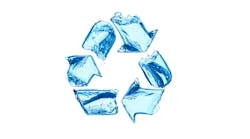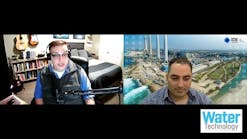Q: Why are boil water notices issued, and under what authority?
A: Boil water notices are issued by state or local public health authorities to warn consumers about drinking water potentially contaminated by microbial pathogens and advise them to take protective actions.
Introduction
Boil water notices are issued when there are reliable indications that the public water supply, or a definable portion of the supply, is likely to be contaminated by microorganisms that could cause disease if the water is consumed without further water treatment provided by consumers. This can be indicated by failure to meet a microbial drinking water standard, failure of an important water treatment process like filtration or disinfection, catastrophic events such as floods and earthquakes that can disrupt drinking water systems, broken or leaking water distribution lines, and epidemiological indications of waterborne disease occurrence. Boil water notices are serious measures that can also have significant adverse consequences, so they should only be issued for good cause.
Boil water notices are not unusual. Kelley Reynolds of Arizona University has made a partial tabulation of U.S. boil water notices issued in 2012-14 and preliminarily located almost 15,000 of them, about three percent on average per year from approximately 150,000 public water supplies. Boiling would also remove some volatiles, but boiling drinking water is definitely not advisable when the contamination is from a nonvolatile chemical such as nitrate. Boiling would just concentrate the contaminant in the water as the water volume was being reduced from release of steam.
Water treatment
Boiling is an extremely effective way to eliminate waterborne pathogens. Boiling advisories are accompanied by information on how long to carry out the boiling. The drinking water treatment goal is to eliminate the pathogens to below the limit of detection, but at least to get below the infective dose. The boiling instructions range from bringing the water to a rolling boil and allowing it to cool (no ice) by the World Health Organization (WHO), to boiling for one minute or boiling for three minutes (U.S. Environmental Protection Agency, EPA, and Centers for Disease Control and Prevention, CDC), or for 10 or 20 minutes. CDC and some others also recommend boiling for three minutes at altitudes above about 5,000 feet because the boiling temperature is reduced by about 0.9o F (0.5o C) per 1,000 feet of altitude. However, this is a precaution that would usually not be essential.
Pathogenic microorganisms are heat sensitive and virtually all are killed well before water reaches 212o F or 100o C, which is the normal boiling point of water at atmospheric pressure. Boiling for one minute is actually more than necessary, but could perhaps be justified by assuring that the water has actually reached boiling and is not merely purging dissolved gasses. The other recommendations range from excessive to grossly excessive to the point of being absurd, as well as wasteful of heat energy — which could also be in limited supply during a catastrophic emergency. This advice is also appropriate when camping or traveling where the available drinking water is not known to be safe.
Table 1 illustrates the effects of heat and time on microbial survival in water. It is temperature dependent, but the efficacy rises almost exponentially as water temperature rises above 60o C (140o F). So, there are virtually no viable organisms remaining long before the temperature reaches boiling at 100o C (212o F). Viruses are more heat resistant than bacteria and protozoa but they are also rendered noninfectious with somewhat longer times at comparable temperatures. The standard pasteurization condition — e.g., for milk — is 72o C (162o F) for 15 seconds or 63oC (145o F) for 30 minutes.
Table 1: Examples of published temperature and time dependency of die off of microorganisms in water
Microbe Temperature (C/F) Seconds Log reduction
E. Coli 60/140 300 1.5
E. Coli 0157 65/149 3 per log
Cryptosporidium parvum 60/140 300 3.4
Poliovirus 1 60/140 1,800 5.4
" 95/203 15 >5
Enteroviruses 60/140 1,800 4.3
" 75/176 30 5
*1 log = 90 percent reduction, 2 logs = 99 percent, 3 logs = 99.9 percent, 4 logs = 99.99 percent and 5 logs = 99.999 percent.
Other beneficial water treatments
Travelers are advised to take precautions when the available water is not reliably safe. Numerous organizations, including CDC and WHO, have published advice on readily available methods travelers could use to reduce risks from microbially unsafe water. These range from boiling, addition of chlorine bleach or iodine, and the use of rated disinfecting filters. Reverse osmosis (RO) and one micron filters may be beneficial for removal of many microorganisms. However, it is essential that performance claims cannot be made beyond those allowed from their certifications. These are identified in the standards ANSI/NSF 53 (health), 55 (ultraviolet, UV), 58 (RO) and 62 (distillation).
Regulatory notices
General public health protection tenets are the basis for boiling. In addition, public water systems in the U.S. are subject to Safe Drinking Water Act (SDWA) regulations that specify conditions where boil water notices are required and even the language that must be used as well as the methods of dissemination of the notice and supporting information. The EPA Public Notification Rule (65 FR 25982, May 4, 2000) identifies conditions when Tier 1, highest level, notifications are required.
These notifications include:
- Within 24 hours of an E.coli MCL violation
- Failure to test for E.coli after a positive total coliform test
- Exceedance of the maximum turbidity level (0.3 ntu, 95 percent of monthly samples, or 1 ntu) in a surface supply
- Detection of E.coli, enterococcus or coliphage in a sample from an untreated groundwater drinking water source
- Evidence of a waterborne disease outbreak
- Other events, at the discretion of the primacy agency.
Specified language includes, e.g., "Fecal coliforms and E.coli are bacteria whose presence indicates that the water may be contaminated with human or animal waste. Microbes in this waste can cause diarrhea, cramps, nausea, headaches or other symptoms. They may pose a special health risk for infants, young children and people with severely compromised immune systems."
It could likely also say, do not drink the water without boiling it first. Bring it to a boil for one minute or perhaps three minutes and let it cool, or use bottled water. Use boiled or bottled water for drinking, making ice, brushing teeth, washing dishes and preparing food until further notice. Bathing is usually acceptable.
Those are fairly ominous statements that should attract attention and cause people to take appropriate actions. But, note the absence of mention of other home treatment methods such as disinfection (bleach or iodine), UV or other POU/POE devices. Distillation units involve boiling, so they should be acceptable.
The boil water notice might actually be too late to affect exposures to contaminated water. Smaller water supplies sample for E.coli only a few times per month. The analysis requires about 24 hours of incubation of the sample plus reporting time, and a verification repeat sample might be carried out sometimes before the health agency that would issue the notice is alerted of the violation. An unfortunate example of a boil notice by EPA occurred in Washington, D.C., in the 1990s on the third day after a brief turbidity violation in one filter at the treatment plant. The retention time of water in the distribution system was about two days, so the affected water had already essentially cleared the system. In reality, there was no emergency.
SDWA regulations (40 CFR 141.100) do not allow communitywide use of POU devices for legal compliance with microbial drinking water regulations. However, proven POE devices would be acceptable, at state discretion, for public water system compliance. The distinction is primarily the need to have safe water at all of the taps in a home as well as the need to have central management of the decentralized water system technology.
Variances and exemptions are legal processes that allow a delay in achieving compliance with a drinking water regulation. It ought to be possible to negotiate communitywide decentralized treatment systems to reduce the risks that could exist during the often multiyear term of the variance or exemption.
Notification methods
The regulations also contain mandatory and optional notification procedures that include one or more of alerts by means of radio, TV, hand delivery and posting in prominent locations. Others could include newspaper, hospitals, physicians, schools and apartments.
Consequences
Boil notices have serious consequences including panic buying of bottled water, adverse publicity and economic costs in the community. They require rapid correction of the cause and rescission of the notice when the problem is solved. However, experience shows that not everyone receives the message, some probably ignore it and the response is diluted as the time span of the notice lengthens.
Commercial opportunities
Any indication of a water quality problem creates an immediate demand for rapid response and opportunities for providers of bottled water and treatment devices. It is essential that any of these activities are consistent with the expectations of the public health authorities. Bottled water should meet FDA or state standards and be appropriately certified. Water treatment devices generally would not be acceptable to regulators as substitutes for boiling or bottled water, but some of them might be providing some benefits commensurate with their certifications to appropriate ANSI/NSF standards, if they were in place.
Conclusions
Boil water notices have serious consequences, so they should be issued only for good cause, consumers need to be kept informed of the cause and provided with mitigation information, and the notice should be lifted as soon as the water supply has returned to normal, safe operation. Notices have specified language requirements and must follow specified notification procedures plus optional information and procedures at state discretion.
Bottled water should meet all federal and state requirements. Water treatment devices can provide water quality benefits, but they should be consistent with the requirements of responsible state public health authorities, and marketing claims should be specific to the appropriate contaminant issue and the ANSI/NSF standards to which they are certified.
Beyond responding to boil water notifications in public water systems because of water supply failures, providers of water treatment devices should also be aware of the water contamination problems that can exist in homes with unregulated private wells and be capable of providing water testing and disinfection services, if needed, as well as other water treatment services to address specific contamination that is detected. Again, this should be consistent with state authority expectations.
Dr. Cotruvo is president of Joseph Cotruvo and Associates, LLC, Water, Environment and Public Health Consultants. He is a former director of the U.S. EPA Drinking Water Standards Division.


